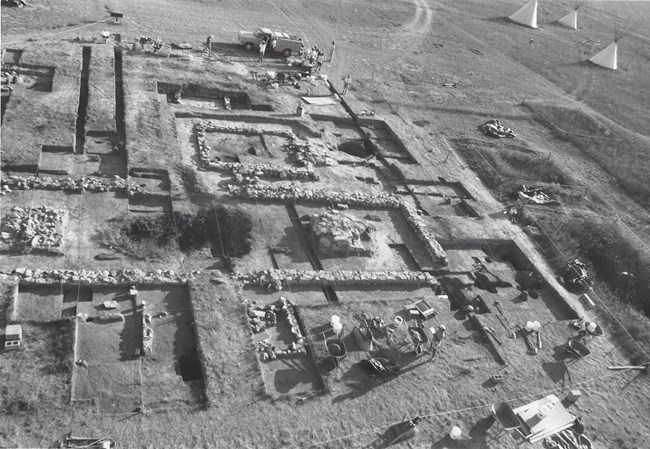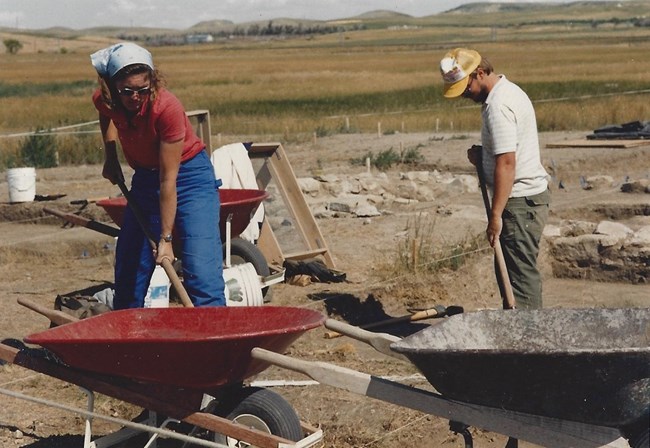The Fort’s Buried Histories UnearthedFort Union Trading Post NHS’s archeological excavations began in 1968 and ran seasonally in 1969, 1970, and 1972. Then in December of 1985, Congress passed a bill that mandated and funded Fort Union trading post’s reconstruction. Realizing this action threatened to destroy an important and irreplaceable archeological resource, National Park Service (NPS) leaders instructed their Midwest Archeological Center (MWAC) to salvage as much information as possible from the site. This inaugurated one of the NPS’s largest-ever archeological projects. 
NPS photo The diversity of recovered artifacts (some displayed in today’s Bourgeois House museum exhibits) makes Fort Union’s collections one of the largest that spans nearly forty years of the fur trade, 1828–1867. More, however, than the one million recovered artifacts makes Fort Union’s excavations remarkable. When one looks at the photographs snapped during the various excavations, the pictures frequently show women working in the excavation plots. In some, women—mostly volunteers like the Willistonite Adrienne Stepanek—are shown pushing shovels into the earth, while in others they are seen pushing wheel barrows or gathered in groups and chatting. This is remarkable because from the 1930s into the 1970s, the historian Polly Welts Kaufman wrote in National Parks and the Woman’s Voice, the NPS “discouraged women from serving in field positions” in archeology. 
NPS photo Their involvement, which Adrienne called one of her happiest experiences, helped to open the field for women in the future to participate in archeological field work. Her opportunity in turn had been prepared by Adrienne Anderson. In the early 1970s, she had served as Fort Union’s lead archeologist, a role that permitted opportunities to pioneer the theories and practices of historic period archeology. Afterward, Anderson rose through the ranks to become the NPS’s first female regional archeologist. In that position, Anderson served as a member of Fort Union’s 1980s reconstruction team. Back on the Missouri River’s north bank, meanwhile, the volunteer excavators and archeologists’ discoveries continually informed Fort Union’s reconstruction planning and public education programs. In addition to settling questions about the size and location of the historic fort’s palisade walls and dwellings, the excavations revealed what construction methods and materials post builders had employed. Archeologists also discovered the sequence in which the fort’s buildings were constructed between 1828 and 1867. |
Last updated: April 24, 2021
